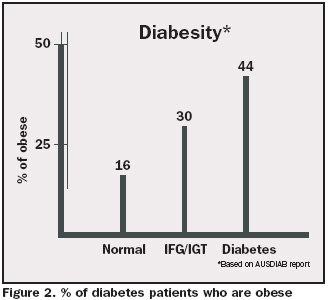|
Find the fats
Fat in foods provides more calories than either carbohydrate or
protein, ie. approximately 37 kilojoules, 9 calories, per gram compared
to 16 and 17 kilojoules, 4 calories, per gram respectively. Reducing
fat intake is often an easier way to reduce total energy intake
than restricting total amount of food. A low fat diet not only helps
weight loss but also improves blood lipid profile. Fat should contribute
no more than 30% of the total energy intake and saturated fats should
be replaced with poly- or mono unsaturated fats wherever possible.
Fat counting is an effective weight loss
strategy that can usually be easily adopted. Fat intake canbe calculated
at the end of a day by keeping a diet history and by using a fat
counter, such as Allan Borushek’s Fat and Calorie Counter.
Patients can choose foods from the fat counter to fit within their
fat ‘budget’. For example, an individual may have a fat
budget of 40 g of fat per day. A fat checklist (Table 2) can help
patients make low fat food choices.
Seek the sugar
Foods high in added sugars are generally more energy dense and less
satiating than healthier alternatives. Patients can use a sugar
checklist to help them choose foods low in added sugar (Table 3).
For some individuals, modest amounts of refined sugars may be acceptable.
For example, it would be silly to insist that patients stop adding
a teaspoon of sugar to their coffee when they are achieving glycaemic
and weight loss goals.
|
